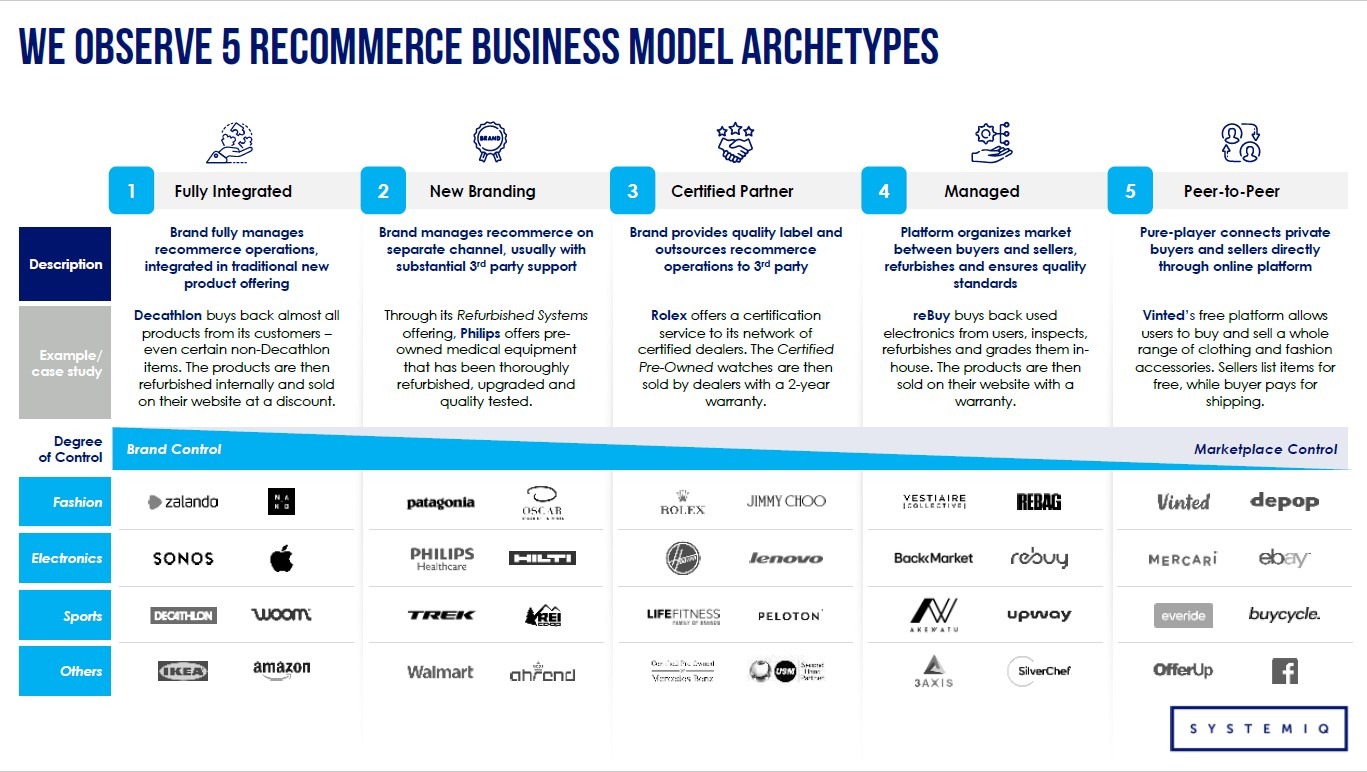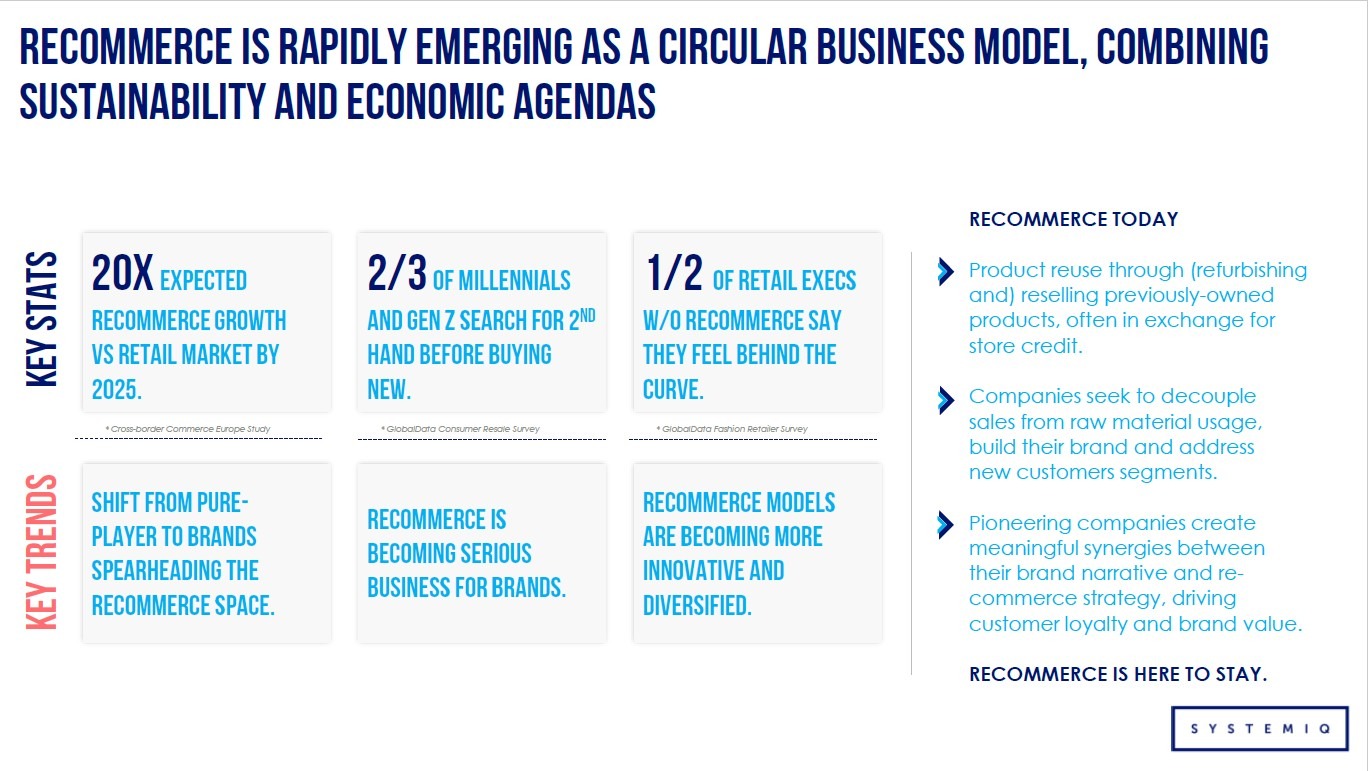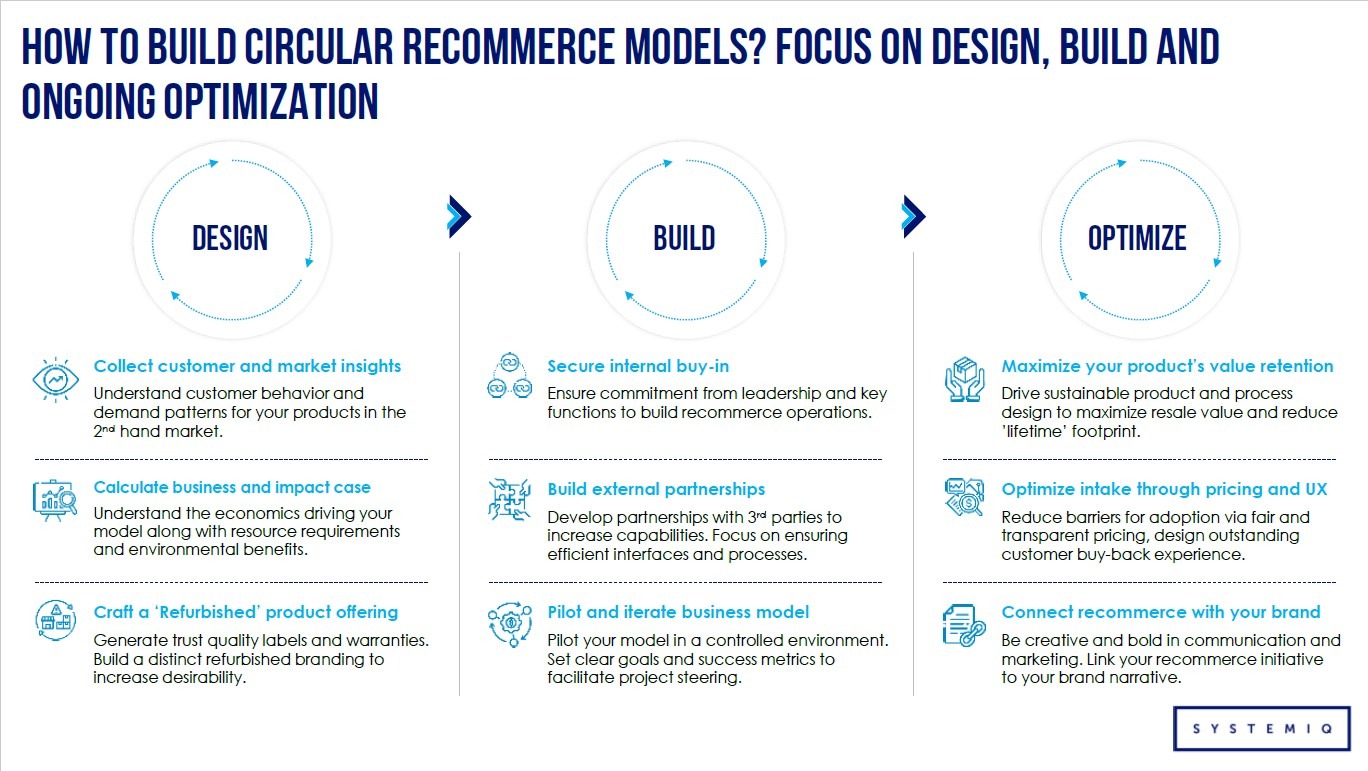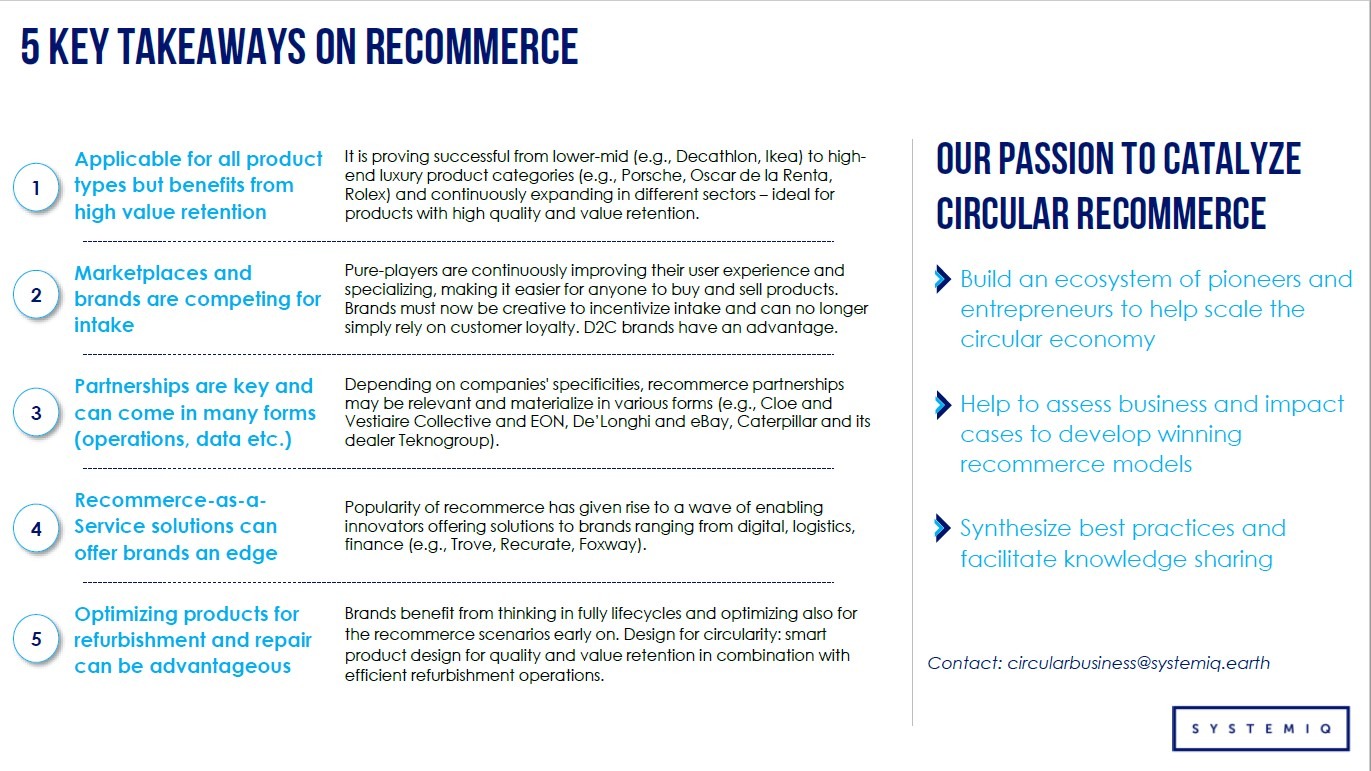Brands from Apple to Hoover to IKEA are tapping into recommerce: refurbishing and reselling previously-owned products to prolong their lifecycle. But which of the 5 recommerce archetypes is the right fit for your business? Felix Philipp and Manuel Braun share a quick guide to designing, building and optimizing a circular recommerce model.
Recommerce is rapidly emerging as a circular business model. Combining sustainability and economic agendas, it is expected to grow by 20x compared to traditional retail between now and 2025.
Brands see recommerce as an ideal model to decouple sales from raw material usage, build their brand and address new customers segments. Pioneering companies are able to create meaningful synergies between their brand narrative and re-commerce strategy, driving customer loyalty and brand value.
And there’s no ‘one size fits all’ model. A marketplace that has been focused on peer-to-peer models like eBay is being revolutionized. Managed platforms like ReBuy, BackMarket, Vestiaire Collective or Upway are developing platforms that also incorporate refurbishment. Brands such as Patagonia or Decathlon are building circular business models – either fully integrated or under a new identity.
Manuel Braun, Julien Diaz and Felix Philipp from our Circular Business Models team have identified 5 recommerce archetypes. In this guide, they explain the key success factors, showing you how to design, build and optimize recommerce models.
If you would like to learn more about our work in this space, please reach out to [email protected].





